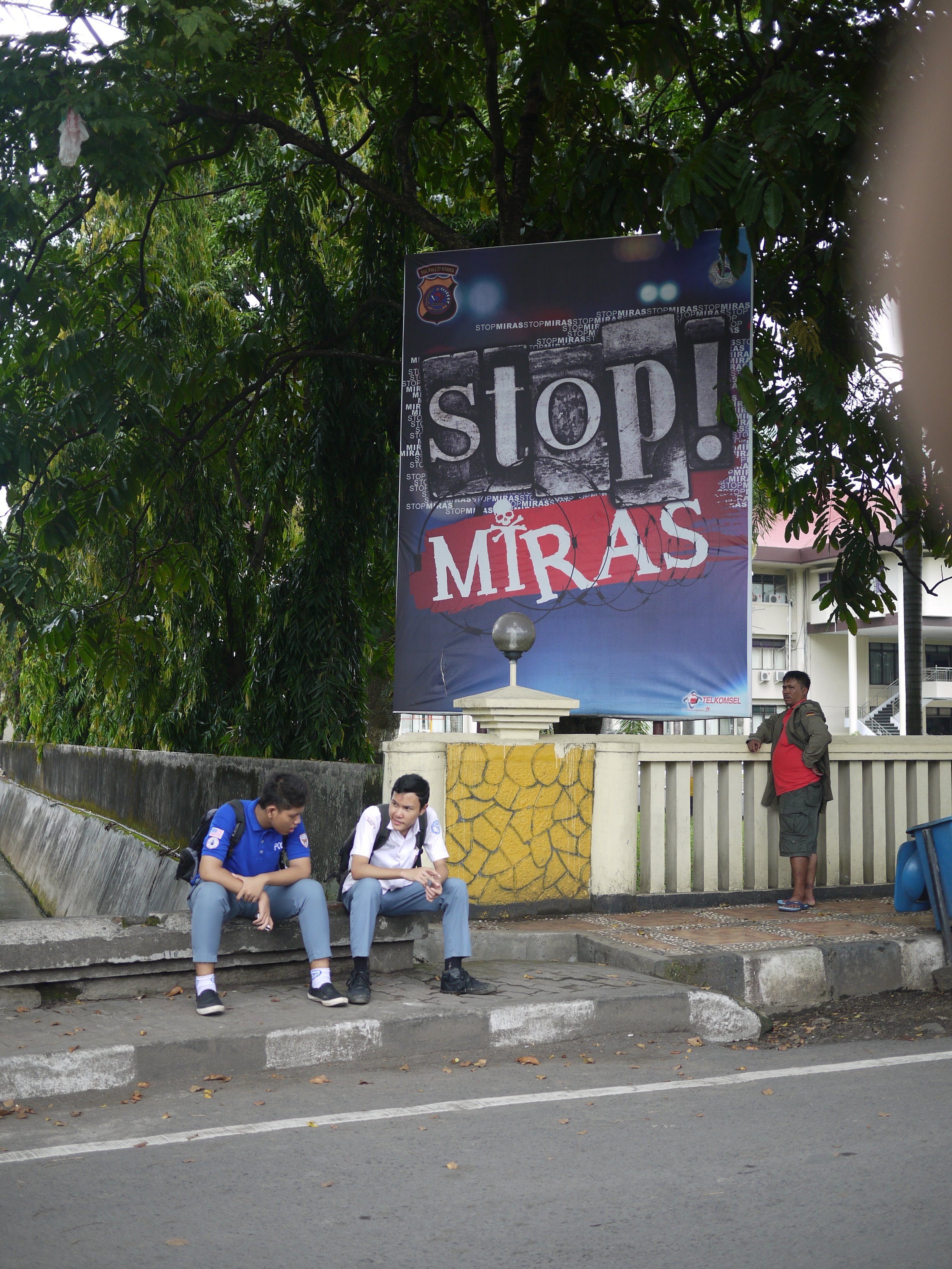Introduction | Warming Up
In a few hours, there would be a flag-raising ceremony and singing of the national anthem. As we waited for the ceremony to begin, and for the sun to make its way above the pine trees, drying the dew on the outside of our tents and warming the spaces inside them, one young man started serving us drinks. Almost ceremonially, he started to pour small servings of Cap Tikus into a small plastic cup made from the bottom half of a bottle of mineral water, waiting as each of his friends took the shot. When my turn came, he stood in front of me and handed me the cup everyone else had been sharing, saying, “Kase panas badan.” (“It will heat your body.”) I accepted. Slowly, I could feel my whole body and the atmosphere around me warming up.
My PhD thesis is a collection of ethnographic stories told in a multiplicity of voices, images, and sounds. These aim to capture the many forms and functions of Cap Tikus, the various things it was made to be in different places and practices, and how it evolved over time—something I had the privilege of capturing because of the long duration of my fieldwork at a time when the drinking of alcohol was contested in Indonesia. Each chapter is linked to a specific time and place, a context through which I examine understandings of Cap Tikus as well as meanings ascribed to it.
Surrounded by pine forest, Mount Soputan’s base camp was usually a serene place for hikers to stop and rest on their way to the volcano’s crater. On the morning of August 17, 2014, however, it was crowded with people and more tents than trees. What felt and looked like a festival was a large annual gathering of young people celebrating Indonesia’s sixty-ninth Independence Day. Unlike many of the young people present, the sun had already risen. But still, it was cold.
Little did I know then what an important role alcohol—and Cap Tikus specifically—played in the everyday lives, relations, celebrations, and identities of people, old and young, in and around Manado city and across the whole of North Sulawesi province. As an alcohol, however, Cap Tikus was also both at the heart of a heated local debate and nestled in the contested terrain of national politics; throughout Indonesia, it was a time of heightened attention toward alcohol.
Cap Tikus meant radically different things in different contexts. Growing more and more curious to explore how the drink figured in these different settings and situations, as well as how it was transformed in each, I began to follow it across various landscapes and drinking circles, bringing into focus different practices, substances, and meanings and highlighting the tensions between them.
Although my friend Dea only appears in two stories in my thesis, she was a constant sounding board and creative sparring partner throughout my fieldwork. She continuously introduced me to new people, joined me on research outings, and led group discussions. Thanks to her and others, my research became a highly collaborative endeavor. With the help of Dea and many other creative friends in Manado, including Bintan, Cecep, and Amanda, I also began to capture stories in visual form and, thanks to Cap Tikus Squad and Lamp of Bottle, as upbeat music.
Our song.
Inspired by the many conversations we had with different Cap Tikus farmers, Dea and I wrote song lyrics. Using local Manadonese, we described a typical morning collecting and cooking Cap Tikus and the drink as an important craft and source of income for farmers and their families. As first time songwriters we ended up with something closer to a poem than punk lyrics. Still, the band "Lamp of Bottle" worked their magic and created this song.
Painter Maria Lassnig’s 2010 book The Pen is the Sister of the Brush is a collection of journal entries, letters, poems, notes, drawings, and photographs. Inspired by Lassnig’s continuum of expressive form, this thesis intermingles text with photographs, lyrics, and, through digital hyperlinks, video and music. I hope to bring readers closer to the ethnographic moment by attuning closely to its multiple sensorial dimensions. Short interludes briefly suspend or disrupt the flow of the chapters to foreground the friction caused by police interventions, new regulations, intersections with concurrent Cap Tikus provisioning pathways, and power relations that, at times, break the drinking circle.
The text on this page is extracted from the PhD thesis: “Inside the Drinking Circle: Cap Tikus, Contested Modernities, and Youth Resistance in Manado, North Sulawesi.” This thesis was submitted by Nastasja Ilonka Roels as part of the Doctoral Regulations of the University of Amsterdam (UvA). All text references should be made to the original thesis manuscript, once published via the UvA Digital Academic Repository, and not to this website. Permission is required to copy, display or reuse images, songs, and videos.








